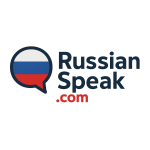Table of Contents
ToggleThe Basics of Russian Numbers

Understanding the fundamentals of Russian numbers is essential for anyone looking to navigate the language effectively. The Russian number system includes a unique set of numerals that reflect both mathematical principles and cultural significance.
For instance, the numbers one through ten serve as the foundation for forming larger numbers, illustrating the logical structure inherent in the language. Examples like “один” (one) and “десять” (ten) not only represent quantities but also embody cultural beliefs, as certain numbers hold symbolic meanings in Russian tradition.
Engaging with this number system allows learners to appreciate how language intertwines with culture, enhancing their understanding and usage of Russian. Mastery of these basics opens the door to more complex mathematical concepts and everyday communication.
Pronunciation Guide for Russian Numerals
Mastering the pronunciation of Russian numerals is essential for effective communication in the language. Learners often face pronunciation challenges due to the complexities of Russian sounds. Understanding phonetic symbols can aid in grasping these nuances.
To effectively pronounce Russian numerals, one can focus on:
- Stress Patterns: Identifying which syllable to emphasize can change the word’s meaning.
- Vowel Sounds: Russian has distinct vowel sounds that differ from English, requiring practice.
- Consonant Clusters: Some numerals contain clusters that may be tricky for non-native speakers.
Learning to pronounce Russian numerals correctly is a key step for anyone studying Russian. Numerals are used daily in conversation, and mastering their pronunciation helps you sound more natural and be better understood. Russian pronunciation can be tricky because it has sounds and stress patterns different from English. This guide will help you understand these differences clearly.
When learning Russian, one of the basic yet important building blocks is mastering Russian numerals (numbers). Pronouncing these correctly is essential because numbers come up daily—whether you are telling time, talking about prices, counting objects, or giving your phone number.
Let’s explore how to pronounce Russian numerals effectively, focusing on the main challenges for English speakers: stress patterns, vowel sounds, and consonant clusters.
1. Stress Patterns in Russian Numerals
In Russian, stress — or which syllable is emphasized — is very important. Unlike English, Russian stress can change the meaning or make a word sound unnatural if placed incorrectly.
For example, the number один (one) is pronounced [a-DEEN], with the stress on the second syllable. Stress placement changes the way the word sounds completely.
Here are some examples:
| Russian | Phonetic | Meaning | Stress Syllable |
|---|---|---|---|
| один | a-DEEN | one | 2nd syllable |
| два | DVA | two | 1st syllable |
| три | TREE | three | 1st syllable |
| четыре | CHYE-ty-re | four | 1st syllable |
| пять | PYAT’ | five | 1st syllable |
![]()
2. Vowel Sounds
Russian vowels are different from English vowels in both quality and length. Also, unstressed vowels often sound different from stressed ones.
- The letter о sounds like “o” in more only when stressed. Otherwise, it often sounds like “a” in about.
- The letter е is pronounced like “ye” in yes when stressed.
- The letter и sounds like “ee” in see.
For example, семь (seven) is pronounced [syem’], where “е” sounds like “ye.”
Practice these vowel sounds carefully because using English vowel sounds directly will make your pronunciation sound unnatural.
3. Consonant Clusters
Russian has many consonant clusters (two or more consonants together without vowels between them). Some clusters can be difficult for English speakers.
For example, the number восемь (eight) has the cluster “с” + “е” + “мь” ([VOH-syem’]), where “сь” is a soft consonant sound.
Here are some common tricky consonant clusters in numerals:
- два ([dva]) — “дв” is a cluster.
- восемь ([VOH-syem’]) — cluster “семь” at the end is soft.
- девять ([DYEH-vyat’]) — the “вят” cluster.
Key Pronunciation Points for Russian Numerals
1. Stress Patterns (Ударение)
In Russian, the stressed syllable in a word is usually louder, longer, and higher in pitch than the others. Stress can completely change the meaning or make the word hard to understand if placed incorrectly.
Example:
- один (a-DEEN) — means “one”
Stress is on the second syllable: “деен” - два (dva) — means “two”
Stress on the only syllable.
Notice some numerals have fixed stress, while others can change depending on grammar, but for basic counting, focus on the main stress.
2. Vowel Sounds
Russian vowels sound different from English vowels. There are five main vowel sounds: а (ah), э (eh), и (ee), о (oh), у (oo). In unstressed positions, vowels can sound weaker or change slightly, which can confuse learners.
Example:
- три (tree) — “three”
The vowel и sounds like “ee” in “see.” - четыре (chee-TY-re) — “four”
The first vowel е in an unstressed position sounds more like “i” in “bit.”
Practice listening and repeating to get used to these vowel changes.
3. Consonant Clusters
Some Russian numerals have consonant clusters that are not common in English, making them harder to pronounce quickly.
Example:
- пять (pyat’) — “five”
The ending ть is a soft “t” sound; the soft sign (ь) means you soften the consonant. - восемь (VO-syem) — “eight”
The cluster с + е sounds like “syem”.
Breaking these into smaller parts and pronouncing slowly can help.
Russian Numerals with Pronunciation and Stress
| Russian | Phonetic (English) | English Meaning | Stress Syllable |
|---|---|---|---|
| один | a-DEEN | one | second syllable |
| два | dva | two | first syllable |
| три | tree | three | first syllable |
| четыре | chee-TY-re | four | second syllable |
| пять | pyat’ | five | first syllable |
| шесть | shest’ | six | first syllable |
| семь | syem | seven | first syllable |
| восемь | VO-syem | eight | first syllable |
| девять | DE-vyat’ | nine | first syllable |
| десять | DE-syat’ | ten | first syllable |
![]()
Tips for Practicing Russian Numerals Pronunciation
- Listen and repeat: Use audio resources with native speakers.
- Focus on stress: Mark the stressed syllable when you write new words.
- Break words down: Practice difficult consonant clusters in smaller parts.
- Use phonetic spelling: Write words phonetically to guide your pronunciation.
- Record yourself: Compare your pronunciation with native speakers.
If you want, I can also provide practice sentences or audio recommendations to improve your pronunciation. Would you like that?
Counting From 1 to 10 in Russian
Counting from 1 to 10 in Russian introduces learners to fundamental numerals that are essential for everyday conversation. The numbers are: один (1), два (2), три (3), четыре (4), пять (5), шесть (6), семь (7), восемь (8), девять (9), and десять (10).
Mastering these basics not only builds a numerical foundation but also enhances communication skills. Engaging with counting games can enrich this learning experience, as students can practice these numbers through fun activities like bingo or scavenger hunts.
Tens and Hundreds: Expanding Your Number Range
Expanding numerical knowledge beyond the basics opens up a wealth of opportunities for effective communication in Russian. Understanding tens and hundreds enhances number formation and allows individuals to express large numbers with ease.
Here are three key aspects to take into account:
- Tens: Numbers like двадцать (twenty) and тридцать (thirty) form the foundation for larger quantities.
- Hundreds: Mastering hundreds, such as сто (one hundred) and двести (two hundred), builds confidence in discussing bigger sums.
- Combination: By combining tens and hundreds, such as двести тридцать (two hundred thirty), learners can articulate even larger numbers fluidly.
This knowledge not only enriches vocabulary but also empowers individuals to navigate everyday conversations and transactions in Russian-speaking environments.
Tens and Hundreds
| Russian (Cyrillic) | English Phonetic | English Definition |
|---|---|---|
| десять | dye-SYAT’ | ten |
| двадцать | DVAH-tsat’ | twenty |
| тридцать | TREED-tsat’ | thirty |
| сорок | SOH-rohk | forty |
| пятьдесят | pyit’-dye-SYAT’ | fifty |
| шестьдесят | shest’-dye-SYAT’ | sixty |
| семьдесят | syem’-dye-SYAT’ | seventy |
| восемьдесят | VOH-syem’-dye-SYAT’ | eighty |
| девяносто | dye-vya-NO-sta | ninety |
| сто | STOH | one hundred |
| двести | DVYEH-sti | two hundred |
| триста | TREE-sta | three hundred |
| четыреста | chee-TYH-ree-sta | four hundred |
| пятьсот | pyat’-SOHT | five hundred |
| шестьсот | shest’-SOHT | six hundred |
| семьсот | syem’-SOHT | seven hundred |
| восемьсот | VOH-syem’-SOHT | eight hundred |
| девятьсот | dyev-yat’-SOHT | nine hundred |
![]()
Ordinal Numbers: First, Second, Third, and Beyond
While learning to navigate the Russian language, one cannot overlook the significance of ordinal numbers, which express positions and rankings in a sequence. Ordinal expressions are essential for effectively communicating order and preference in everyday conversations. For instance, understanding the difference between “первый” (first) and “второй” (second) can enhance clarity in discussions.
Here is a brief overview of some ordinal numbers in Russian:
| English | Russian |
|---|---|
| First | Первый |
| Second | Второй |
| Third | Третий |
The ordinal usage extends beyond basic counting, providing a foundation for describing events, dates, and achievements. Mastering these expressions allows learners to engage more freely and confidently in Russian-speaking environments.
Common Math Vocabulary in Russian

Mathematics serves as a universal language, and understanding its vocabulary in Russian is essential for effective communication in academic and everyday contexts. Familiarity with basic math terms enhances comprehension and fluency in discussions involving mathematical operations.
Here are three fundamental concepts:
- Сложение (Slozhénie) – Addition: The process of combining numbers.
- Вычитание (Vychitaniye) – Subtraction: The operation of removing one number from another.
- Умножение (Umnozhénie) – Multiplication: The method of calculating the total of one number added to itself repeatedly.
Grasping these terms allows individuals to engage confidently in both casual and formal mathematical conversations, promoting a sense of freedom in exploring mathematical ideas.
Sure! Here are three brief examples using Russian Cyrillic for the math terms:
- Для сложения (Slozhénie), 2 + 3 = 5.
(For addition, 2 + 3 = 5.) - Вычитание (Vychitaniye) из 7 минус 4 равно 3.
(Subtraction of 4 from 7 equals 3.) - Умножение (Umnozhénie) 5 на 2 даёт 10.
(Multiplication of 5 by 2 gives 10.)
Understanding such vocabulary lays a strong foundation for further mathematical study.
Practical Examples of Using Numbers in Conversations
In everyday conversations, numbers play an essential role in conveying information and making decisions. For instance, in shopping scenarios, a person might ask, “Сколько стоит это?” (How much does this cost?), emphasizing the importance of price. Additionally, they might inquire about discounts or quantities, enhancing their shopping experience.
Here’s a practical table to illustrate common numerical exchanges:
| Scenario | Example |
|---|---|
| Asking for prices | “Это стоит 500 рублей.” |
| Inquiring about quantity | “У вас есть три яблока?” |
| Discussing discounts | “Сколько процентов скидка?” |
| Comparing items | “Этот товар дороже того.” |
| Making decisions | “Я куплю два.” |
![]() These examples show how numbers facilitate meaningful communication in everyday life.
These examples show how numbers facilitate meaningful communication in everyday life.
Tips for Practicing Counting in Russian
To effectively master counting in Russian, learners should incorporate practical exercises into their daily routines. Engaging with numbers can be both enjoyable and educational.
Here are three effective tips for practice:
- Number Games: Utilize apps or online platforms that offer interactive games focusing on Russian numbers, making learning fun and competitive.
- Flash Card Activities: Create flashcards with numbers and their Russian equivalents. Regularly quiz oneself or partner with a friend to enhance retention.
- Daily Counting: Integrate counting into everyday tasks, such as counting items during grocery shopping or tracking steps while walking, reinforcing the language in real-life contexts.
Test Yourself on Russian Counting and Math Vocabulary
1. How is the number “four” (4) pronounced in Russian, and which syllable is stressed?
a) CHEE-ty-re, stress on the first syllable
b) chee-TY-re, stress on the second syllable
c) chee-ty-RE, stress on the third syllable
Correct Answer:
b) chee-TY-re, stress on the second syllable
2. What does the Russian word “сложение” (slozhénie) mean in English?
a) Subtraction
b) Addition
c) Multiplication
Correct Answer:
b) Addition
3. Which of the following is the correct Russian word and pronunciation for “ninety”?
a) девяносто (dye-vya-NO-sta)
b) девяносто (dye-vya-no-STA)
c) девяносто (DYE-vya-no-sta)
Correct Answer:
a) девяносто (dye-vya-NO-sta)
Frequently Asked Questions
How Do I Say Large Numbers in Russian?
To express large numbers in Russian, one must understand specific counting rules. These include the unique terms for thousands, millions, and billions, as well as the correct structure for combining numbers, ensuring clear communication and comprehension.
Are There Regional Variations in Russian Numbers?
Regional dialects in Russia can exhibit variations in numerical expressions, influencing pronunciation and usage. For instance, some regions may prefer specific terms or phrases, showcasing the rich linguistic diversity within the Russian language and its communities.
What Are Russian Counting Songs or Rhymes?
Russian children’s counting songs and rhymes often accompany counting games, making learning enjoyable. These playful melodies help children grasp numbers through repetition and rhythm, fostering engagement and enhancing memory while nurturing a love for language.
How Do I Express Fractions in Russian?
To express fractions in Russian, one must master fraction vocabulary, such as “половина” (half) and “четверть” (quarter). Clear explanations and engaging examples help learners effectively convey fractions in various contexts, promoting understanding and fluency.
What Are Common Mistakes When Counting in Russian?
Common mistakes in counting often stem from pronunciation issues and misinterpretation of number forms. Learners might confuse similar-sounding digits or apply incorrect grammatical rules, leading to misunderstandings. Structured lessons can help clarify these frequent errors effectively.



